Admittedly, the dragonflies in this post are neither rare nor local. Brachydiplax chalybea is, instead, very common, with a range extending from eastern India to Japan and Indonesia.
Abundance, however, does not - or should not, despite any naturalist's fascination with rarities - detract from its beauty.
Males like these are easy to photograph as they guard their territories. The brown, yellow and black females, surprisingly for such an abundant species, are rarely seen.
Ictinogomphus decoratus is the only member of the family Gomphidae that I have found commonly on open water in Sarawak (indeed, I have had frustratingly little luck finding other gomphids at all).
 The three common members of the genus Neurothemis in Sarawak are able to tolerate almost any place with open water; I tend to refer to them as "ditch dragonflies", and they may well be the last of their kind to be driven from places like MJC. Telling the three apart is tricky, though this site is a great help. This, for example, appears to be a male N. ramburii. Compare it to N. fluctuans, below - note the robust body, smaller clear areaon the wingtips, and in particular the "open" rectangual space at the base of each wing (the cubital space) crossed by a single vein.
The three common members of the genus Neurothemis in Sarawak are able to tolerate almost any place with open water; I tend to refer to them as "ditch dragonflies", and they may well be the last of their kind to be driven from places like MJC. Telling the three apart is tricky, though this site is a great help. This, for example, appears to be a male N. ramburii. Compare it to N. fluctuans, below - note the robust body, smaller clear areaon the wingtips, and in particular the "open" rectangual space at the base of each wing (the cubital space) crossed by a single vein.I believe that these photos show Neurothemis fluctuans. This is a smaller dragonfly than N. ramburii, with a more extensive clear (or hyaline) area on the wings and a seemingly lighter build. These are all males; the upper photograph shows a juvenile.
Neurothemis terminata is the easiest to identify of the three (at least in adult males like these); the hyaline area covers the wingtip only, without a "backsweep" along the trailing edge of the hindwing.
Orthetrum sabina, along with the Neurothemis species, is probably the most ubiquitous dragonfly in Sarawak (and I have shown it many - perhaps too many? - times here). It has a huge range, from North Africa to Australia and Japan.
At least three dragonflies with red males are (or were) common at MJC, including the widespread Orthetrum chrysis...
...Rhodothemis rufa...
...and the one that cannot possibly be mistaken for any other, the tiny Nannophya pygmaea, which may be the world's smallest dragonfly.
Nannophya males, despite their size, stand out as they guard their territories, usually from a perch on a low leaf or grass stalk. I see females far less frequently. They are equally distinctive, with a banded pattern quite unlike that of most female dragonflies. In fact, they might easily be taken for a wasp - and perhaps that resemblance, or mimicry, has actually evolved because it afforded them some protection from predators.
The "pulcherrima" in the name Orchithemis pulcherrima means "very beautiful", and I think this lovely little orange dragonfly deserves it. Note the male Nannophya in the background of the lower photo.
Probably the most spectacular dragonflies, though, are the members of the genus Rhyothemis. It's the patterned wings, of course, that do the trick, plus the fact that the patterning can vary tremendously from species to species. The three species at MJC are very different from one another in both size and pattern. The largest, Rhyothemis phyllis, confines the pattern to tiger-like bars on the base of the hindwing.
Rhyothemis obsolescens, by contrast, has the entire surface of its wings broadly patterned in lustrous shades of bronze...
...while the smallest, Rhyothemis triangularis, has the base of both fore and hind wings embossed with rich iridescent blue.
Though I visit MJC to see dragonflies, I try not to ignore other things (such as the egg mass of this unidentified Rhacophorid frog).
Butterflies along the roadside include common species such as the Lesser Dart (Potanthus omaha)...
...and the Cruiser (Vindula dejone).
The road surface attracts Straight-line Mapwings (Cyrestis nivea), which prefer to perch on rocky ground. Like the other insects in this posting, I do not know if they are still there; but I think MJC, even if no longer an area worth preserving, is an area worth restoring.













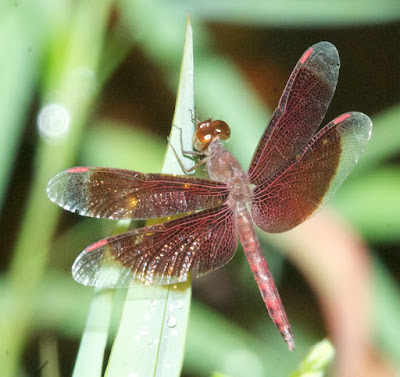








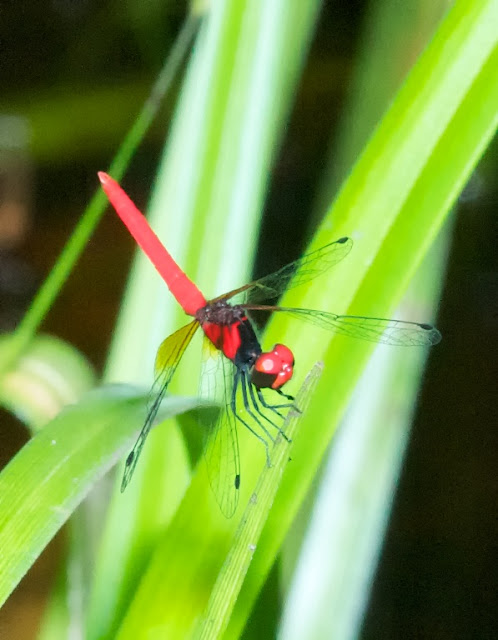













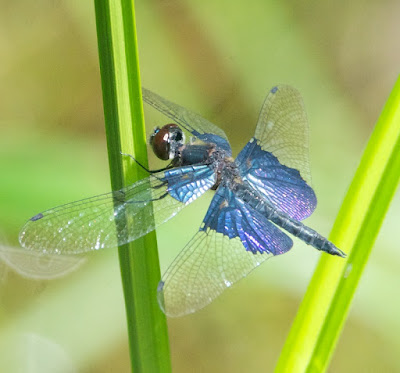


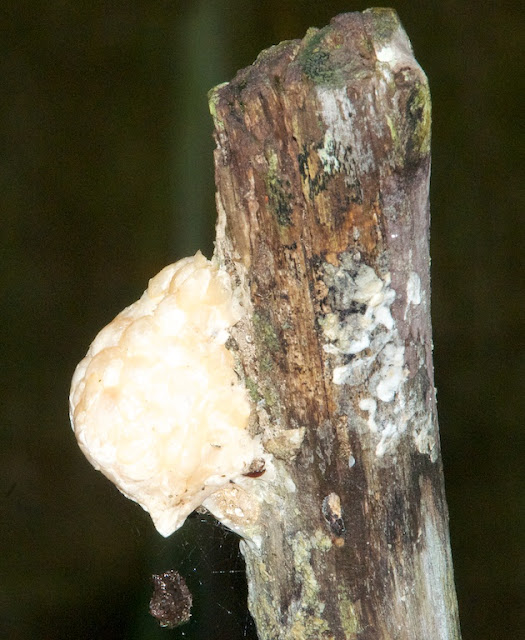
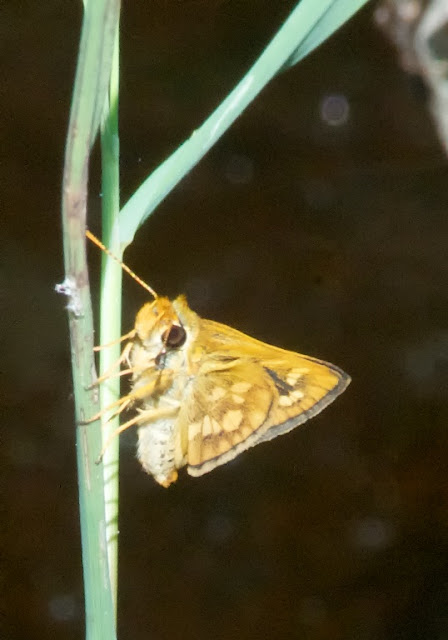




No comments:
Post a Comment